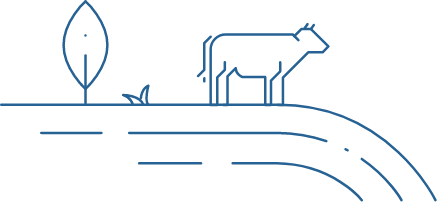Country Reports April 2013
Members of the IDF Standing Committee on Dairy Policies and Economics (SC DPE) from 17 countries submitted country reports covering the six months leading up to April 2013.
Field Guidelines for the Assessment and Management of Aflatoxins in Dairy Products Across the Supply Chain
This factsheet presents current practices for controlling mycotoxins in the milk supply chain. Aflatoxins are generally considered a critical contaminant and good indicator to measure the appropriateness of feed controls in the food supply chain
IDF Factsheet 4/2017: Country Reports Spring 2017
Members of the IDF Standing Committee on Dairy Policies and Economics (SC DPE) from 11 countries submitted country reports covering the six months leading up to April 2017.
IDF Factsheet 3/2017: Guidance on Antimicrobial Resistance from the Dairy Sector
This document describes what antimicrobial resistance (AMR) is, outlines dairy sector guidance on prudent use of antimicrobials and defines the global dairy position on AMR. These initiatives complement the many animal health, animal welfare and food safety practices that the dairy sector has in place to deliver safe and secure dairy products to global consumers.
IDF Factsheet 2/2017: Reasons why galactose is good for you
Galactose is a simple sugar that is normally transformed in the liver before being used up as energy. This sugar is quite abundant in human diets and helps in a number of functions.
IDF Factsheet 1/2017: The importance of salt in the manufacturing and ripening of cheese
Salt contains the two elements sodium (Na) and chlorine (Cl), which both fulfil important functions in the human body. Sodium plays a role in the regulation of our water balance and the osmotic pressure in the cells, in the acid-base balance and in the control of muscles and nerves.
Raw milk cheeses
Raw milk cheeses have a desirable flavour and its consumption has a positive impact on the gut microbiota. Food safety of raw milk cheeses is assured by interventions at the dairy farm, at the processing plants, and by consumer education.
Bacillus cereus in milk and dairy products
Bacillus cereus may cause contamination of raw milk leading to food poisoning. Adoption of measures to minimise contamination of food from the very outset, even before processing is the best way to avoid its growth to dangerous levels.
Escherichia coli as indicator in cheese processing
Coliforms can be found in the environment and can be used to indicate that other pathogenic organisms of faecal origin may be present. This factsheet explains the use of Escherichia coli as hygiene indicator in cheese processing
Impact of Transport temperature on the Quality of dry dairy Products
The aim of this document is a communication on the conditions dry milk products experience when shipped in dry shipping containers and how this impacts the quality of these goods.






